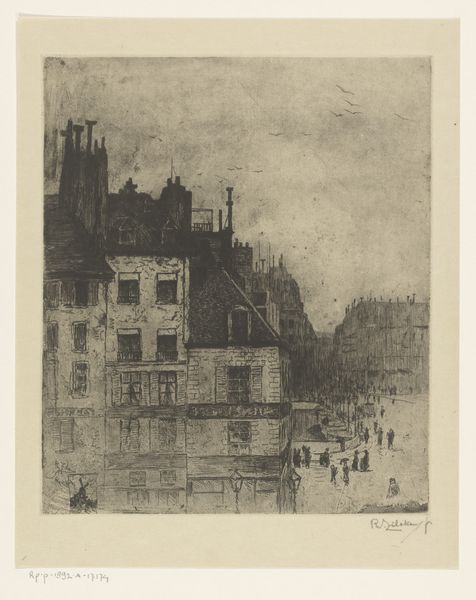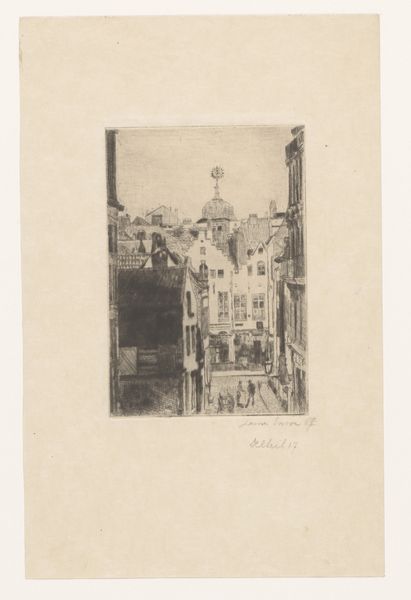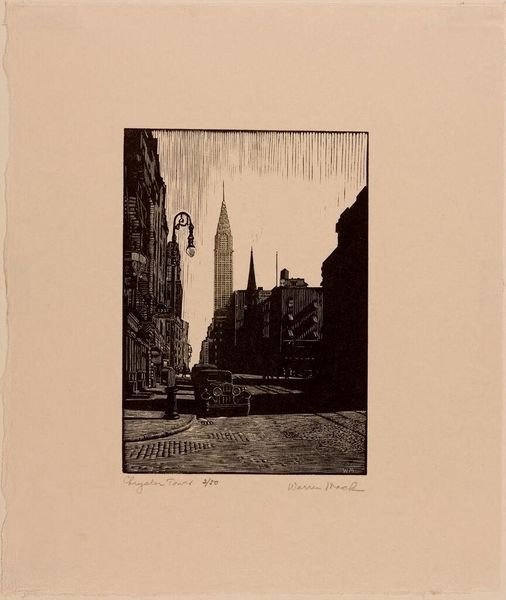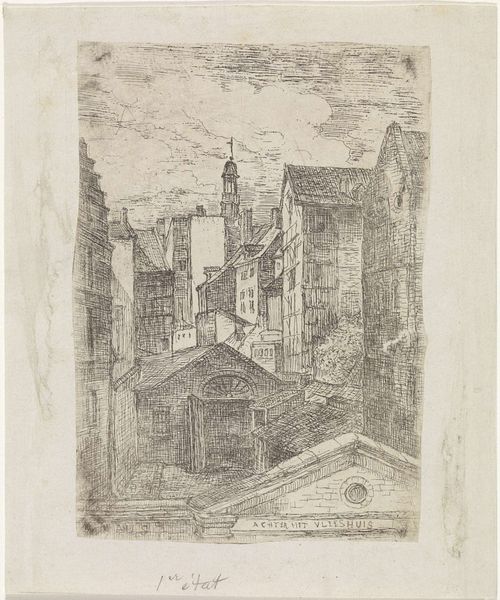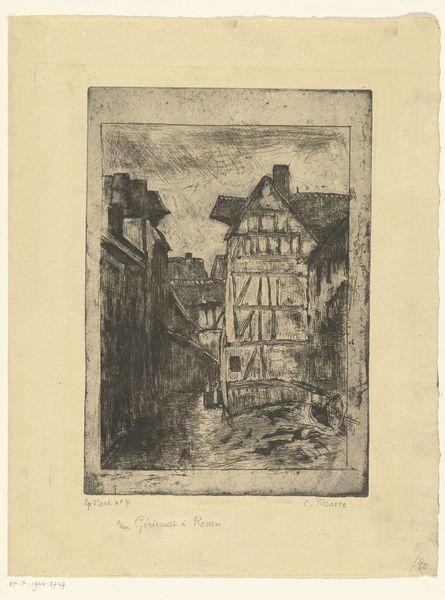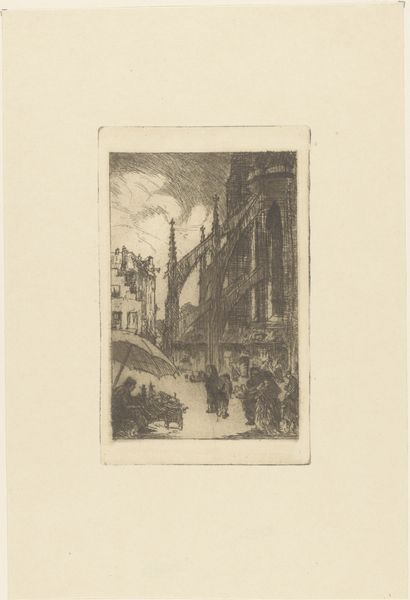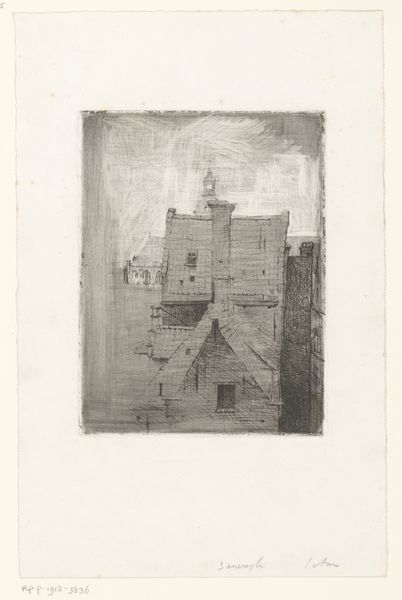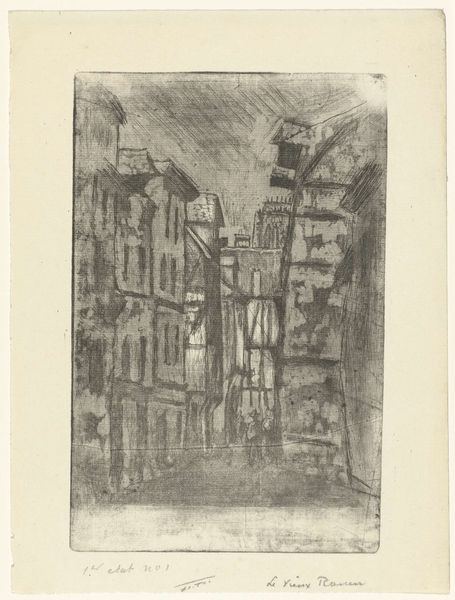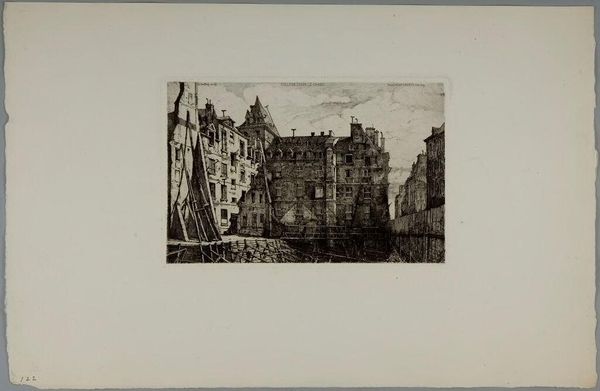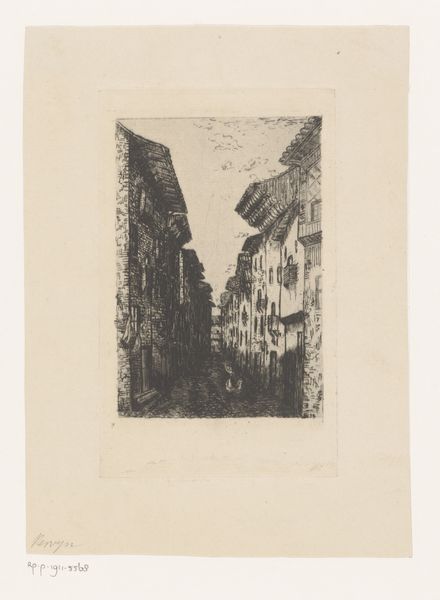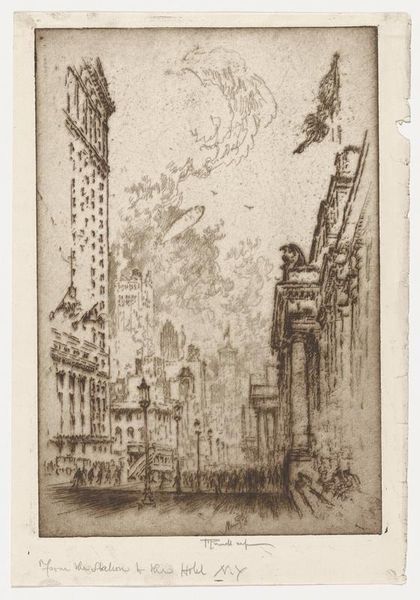
print, etching
#
portrait
# print
#
impressionism
#
etching
#
united-states
#
cityscape
Dimensions: 9 5/8 x 7 3/8 in. (24.45 x 18.73 cm) (plate)17 7/16 x 12 1/16 in. (44.29 x 30.64 cm) (sheet)
Copyright: No Copyright - United States
Curator: Right now we’re standing in front of Joseph Pennell’s etching from 1881, titled "Public Buildings," currently held in the Minneapolis Institute of Art collection. Editor: It's instantly haunting, almost like a scene from a dream or a half-remembered story. There's this incredible sense of verticality fighting against the haze, or is it soot? The texture is thick, almost palpable. Curator: Pennell’s choice of etching captures the evolving urban landscape of the United States during that time. Think about the socio-economic forces shaping the construction; labor, materials, all geared toward creating these public edifices. Editor: I get the practical aspects, sure. But visually, the scaffolding dominates the image, making you wonder what's being built and at what cost. Are those distant figures specks of humanity swallowed by progress? Curator: Possibly. Etchings, especially, have a fascinating production history. It’s about the manipulation of materials, the application of acid to the metal plate, and the mechanics of printing. These choices would have dictated the availability and affordability of art for a burgeoning middle class. Editor: Knowing that doesn't fully resolve its moody aura for me. Maybe it's the light, sooty. Whatever it is, this piece, this captured slice of architectural labor speaks of transient moments amidst larger ambitions. It has a voice. Curator: In conclusion, it provides a crucial insight into not just the urban aesthetics, but the entire infrastructure of art production in late 19th-century America. Editor: For me, it lingers as a moment caught in amber, or sepia, with the city struggling to breathe beneath that skeletal giant under construction. Profoundly moving, regardless of process.
Comments
No comments
Be the first to comment and join the conversation on the ultimate creative platform.

